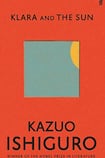
Klara and the Sun is a welcome return to form for Kazuo Ishiguro in his first novel since 2015’s The Buried Giant, which baffled and divided critics and fans alike. Set in a post-Arthurian Britain, where a sleeping dragon breathes an amnesia-inducing “mist” over the land so that the inhabitants can forget the recent violent conflict, The Buried Giant seemed intent on explicitly allegorising what had been left compellingly implicit in Ishiguro’s previous works.
Ishiguro has frequently exploited a range of genres in pursuit of his cardinal themes – the capriciousness of memory, the difficulty of acknowledging uncomfortable truths, and the contingency of what makes us human. When We Were Orphans put a postmodern spin on the detective novel. Never Let Me Go’s depiction of a society dependent on harvesting clones’ organs sat squarely within the genre of dystopian fiction.
The turn to fantasy in The Buried Giant, however, seemed motivated solely by its facilitating a kind of thought experiment about the effect on human relations were a society’s collective memory of past trauma to be repressed. This equivocal commitment to its genre resulted in an oddly unsettled tone, with the novel at times reading like a philosophical parable about the limits of love and attachment, and at other times as little more than a parody of fantasy fiction.
By contrast, Klara and the Sun, as one among a litany of novels about artificial intelligence, seems more suited to Ishiguro’s talents. The genre, after all, is preoccupied by a question central to much of his fiction – whether the qualities that make us human are unique, inimitable or inalienable.
As with all of Ishiguro’s novels, the eponymous narrator of Klara and the Sun assumes that we already know much about the unfamiliar world she inhabits, requiring that we piece together basic narrative context from clues, hints and innuendos dropped by the various characters she encounters.
Klara is an “AF”, an Artificial Friend, an android designed to alleviate the loneliness of privileged teenagers who are taught by video calls and have few social interactions. While the AFs are standardised – Klara belongs to a class recently superseded by the more cognitively capable but less empathetic B3s – they develop their own “personalities” (for want of a better word).
It is Klara’s unusual curiosity and perceptiveness, especially in the reading of human emotions, that attract Josie, the thoughtful and sensitive 14 year old who buys her from the AF store under the watchful gaze of her anxious mother, Chrissie.
It soon becomes apparent that the mysterious illness Josie suffers from is not a product of simple bad luck but a side effect of her being “lifted”, an obscure procedure that confers cognitive advantages and social status on brighter children, and which forms the basis for a stark class division between the lifted and the unlifted.
This society crudely cleft into winners and losers is an expedient critique of the basic premise of meritocracy: that the more “gifted” are more deserving of a life of opportunity and dignity. Like Never Let Me Go – a novel as much about care work as cloning – Klara and the Sun makes abundantly clear the extent to which Ishiguro values kindness and empathy over imagination and intelligence.
Modern tools
In the second half of the novel, Josie’s health deteriorates, pushing Chrissie to increasingly consider a desperate solution to enable her daughter to “continue” after death. Josie’s father, Paul, is bitterly opposed to the plan, in part because he secretly fears that there is nothing unique about his daughter – “nothing there our modern tools can’t excavate, copy, transfer”. Klara, meanwhile, works on a solution of her own, soliciting the sun to bestow on Josie some of the “special nourishment” that gives life to the AFs.
Paul and Klara’s discussions about whether there is such a thing as “the human heart” – “something that makes each of us special and unique” – make the novel’s larger philosophical concerns explicit. These concerns are at their most compelling, however, in Klara’s own narration, which blends comic interpretations of human behaviour with displays of extraordinary sensitivity and emotional intelligence, especially in the melancholic final pages, which show Ishiguro’s characteristic command of poignant understatement at its very best.
Klara and the Sun gathers up ingredients from Ishiguro’s most successful novels: the deft dramatisation of the thoughts and feelings of a narrator who knows more than they are able to acknowledge in The Remains of the Day; the devastating acquiescence to one’s own exploitation that animates Never Let Me Go; and even, in Klara’s struggles to comprehend the world around her, the evocation of profound disorientation found in Ishiguro’s most challenging work, The Unconsoled (which is less read and celebrated than it deserves).
The result is a novel that is as unlikely to persuade the unconvinced as it is certain to satisfy Ishiguro’s devoted fans.










